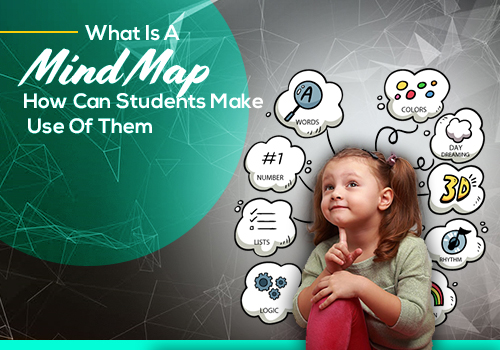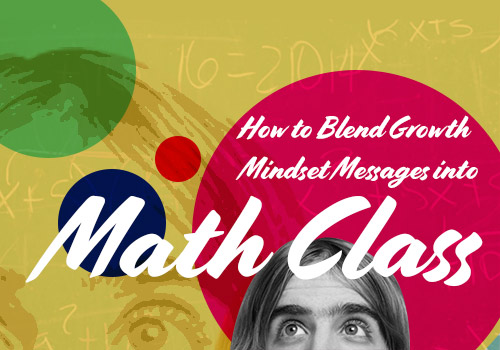Mind mapping is a very common approach in various industries to externalise and visualise the difficult concepts in its simplest form. This innovative thinking tool is one of the best methods followed so far to connect easily between ideas and relations. By considering its success rates, the strategy is widely being adopted in the teaching and learning areas. Many of the studies have reported a positive learning experience when mind mapping is made part of the study life.
Here let us have a look at what exactly is a mind map and how students can make use of them in their learning phase.
What Is A Mind Map?
This innovative tool is a great option when it comes to understanding and absorbing data in the optimal form. This pictorial representation of information gives an overview of complex data or a topic in the first look itself. This map usually starts off with a central idea and then gets surrounded by associated branches of related topics. The central idea can be represented using a word or image which is then extended outwards to sub topics or ideas. The topics and branches with different ideas can be represented using different colors for easy understanding. When used in the right way, it improves independent learning and critical thinking. This is an absolute time saving strategy during several phases of your study life.
To learn more about how students can better use the mind maps and how it makes a remarkable difference in their learning progress, take a look at the key points.
- Take notes better: The mind map strategy helps students to take notes in a better form. This aids them to revise the lessons during exam times with minimal effort. Remembering a lot of facts and figures covered in the syllabus would be really tough for the students. Mind map allows organizing this information in a better to understand form. They can do it by using keywords and then visually connecting the ideas and facts. Having all important topics in a single sheet of paper makes it easy for students to go back to the lessons easily and review them.
- Project planning: This area of study requires good organization of both thoughts and time. A good mind map makes the job easy for you and you can complete each phase of your project step by step in a well structured way. The talking points to be covered in the project can be presented in a very interactive way using this visualization tool. Moreover, it can act as a simplified content management system that helps you to access necessary information from a centralized location.
- Problem solving: Seeing things clearly is the key to analyze it on a better way. Instead of stressing your head to find a solution, take it on a lighter note using a mind map. This is the right way to watch out the many options and possibilities that can be used effectively to solve the puzzle or problem. During the process of problem solving, you can keep on refining the map by taking into account the incoming thoughts to draw out a realistic or the most practical solution. Moreover, this lets the students to look at the problems from a different angle and work it out better.
- Exam study plans: Exams are one of the toughest phases for most of the students. Remembering piles of notes can be a scary dream. However, the mind map strategy can be used to visually represent only the main topics in simple forms. You can also form small mind maps for each topic separately. You can cover more lessons easily in this approach and have an idea about the lessons covered so far. You just need to glance through the main mind map before the exam and fill up the rest from the memory. The mental triggers of this tool let the brain to memorize the stuff in a more effective manner.
- Brainstorm ideas easily: This amazing tool lets you brainstorm your ideas or thoughts in an organic manner without bothering about structure and order. When the ideas are structured visually, it is really easy for student to make the analysis and recall. A student brain can easily pick up organized diagrams than a bulk or pile of data. This powerful tool lets you do a creative work out of your brain and think more progressively by gearing up an imaginative mindset. This is in fact a free thinking strategy in which students can visualize the ideas from a deeper level.
- Connect ideas efficiently: Making a good connection between the ideas learnt throughout different lessons or sessions is important to have an upper hand over the subject. This is really important when it comes to memorizing the lesson segments during exams. The mind map helps you to make central concept and build an intuitive framework around it. When information gathering and applying facts is possible in its simplest form, connecting ideas becomes really easy than you think. The radiant structure of the mind maps can correspond well to the way the brain process information.
- Assess situations better: When it comes to complex situations in the lessons, this radical tool helps you to assess the data points better and move on pretty easily. Let it be any confusing situation of any subject area, taking out a few minutes to draw out a mind map with relevant facts and figures helps you to reach the conclusion really quickly. In fact both sides of your brain can be used effectively that helps you to think out of the box. This means that students can easily collaborate with the logic and analytics as well as the creative and imaginative part.
- Present ideas clearly: It is common for students to make a mess on the presentations. Mind map is also a good solution to present ideas more clearly and convey the message in the simplest form to the audience. Piles of notes on the screen can be tough when handling an audience and so use keywords and images to connect them. You can even number your points and give an idea about the quantity of topic to be covered to the audience. Mind map helps to frame the presentation in a more conversational way and make a good interactive session by making eye contact with the audience.
- Group study plans: Studying in groups can be really effective during exam times. Sitting alone and studying can be stressful especially during exams and group study can be more fun while you teach and learn from others. Mind maps can make the sessions more productive and interesting. Each one of you can create your mind maps during self study time and share it with others during group study. You can then form a new mind map by including the ideas and collective thoughts.
- Creative inspiration: This is one of the great ways to turn creative. Whether it is planning an essay, painting a picture or writing a story, the tough part is to get a good start. The working of mind map is more or less similar to a brain. So just start off with a word or image you think off in your mind by drawing it out. To the surprise, it can spark off numerous connecting ideas and turn your thought into an amazing art work. As thoughts flow freely, stepping out with novel and creative ideas seems really fun and easy. The tool lets you see the bigger picture of a concept or idea from a wider perspective that makes the job easy.
- Improved decision making: When it comes to deciding on some important areas of your school life, it could be tough when a number of concerns and possibilities are running at the back of your mind. Use the mind map and just draw off the possible pros and cons as well as your concerns or doubts when thinking about particular decision. You can clear it off one by one and strike it off when you have done with it. In this way, you can make decisions that are error free and that goes by all considerations.
There are different types of mind mapping tools designed by enthusiasts to help out students in the job that automates the process. You may choose from mind maps that can be used offline, online mind maps or mind map software.
Many of the reports have pointed out that the mind map approach can assist in their cognitive learning theory as well as enhance their reading comprehension.
Moreover, they can benefit from improved thinking and learning skills when the tool is used effectively. One of the main problems faced by students is to memorize what they have learnt. And interestingly, the mind map strategy is proving good to increase the retention rates.

